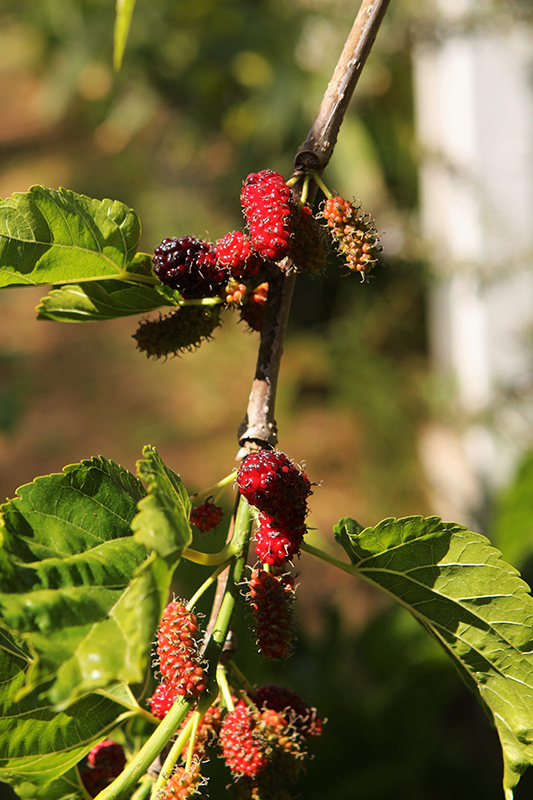* This is a "special order" plant - contact store for details
Height: 40 feet
Spread: 40 feet
Sunlight:
![]()
![]()
Hardiness Zone: 6
Other Names: Persian Mulberry, Sycamine Tree
Description:
A broad-crowned, small to medium tree that is well known for its edible fruit; dark green, heart shaped leaves on numerous branches makes it a great shade tree; inconspicuous flowers are followed by tasty deep purple-black berries in late summer to fall
Edible Qualities
Black Mulberry is a large tree that is typically grown for its edible qualities, although it does have ornamental merits as well. It produces large red oval berries with a deep purple blush and deep purple flesh which are typically harvested when mature. The berries will often fade to black over time. The berries have a sweet taste and a juicy texture.
The berries are most often used in the following ways:
- Fresh Eating
- Cooking
- Baking
- Preserves
- Canning
- Freezing
Features & Attributes
Black Mulberry has dark green deciduous foliage on a tree with a round habit of growth. The serrated heart-shaped leaves turn outstanding shades of yellow and in the fall. The red fruits with a deep purple blush and which fade to black over time are held in abundance in spectacular clusters from mid summer to early fall. The fruit can be messy if allowed to drop on the lawn or walkways, and may require occasional clean-up.
This is a dense multi-stemmed deciduous tree with a more or less rounded form. Its relatively coarse texture can be used to stand it apart from other landscape plants with finer foliage. This is a high maintenance plant that will require regular care and upkeep, and is best pruned in late winter once the threat of extreme cold has passed. It is a good choice for attracting birds to your yard. Gardeners should be aware of the following characteristic(s) that may warrant special consideration;
- Messy
- Disease
Aside from its primary use as an edible, Black Mulberry is sutiable for the following landscape applications;
- Shade
- Windbreaks and Shelterbelts
Planting & Growing
Black Mulberry will grow to be about 40 feet tall at maturity, with a spread of 40 feet. It has a low canopy with a typical clearance of 3 feet from the ground, and should not be planted underneath power lines. It grows at a slow rate, and under ideal conditions can be expected to live to a ripe old age of 100 years or more; think of this as a heritage tree for future generations! This is a self-pollinating variety, so it doesn't require a second plant nearby to set fruit.
This tree is quite ornamental as well as edible, and is as much at home in a landscape or flower garden as it is in a designated edibles garden. It does best in full sun to partial shade. It is very adaptable to both dry and moist locations, and should do just fine under average home landscape conditions. It is considered to be drought-tolerant, and thus makes an ideal choice for xeriscaping or the moisture-conserving landscape. This plant does not require much in the way of fertilizing once established. It is not particular as to soil type or pH, and is able to handle environmental salt. It is highly tolerant of urban pollution and will even thrive in inner city environments. This species is not originally from North America.
* This is a "special order" plant - contact store for details







